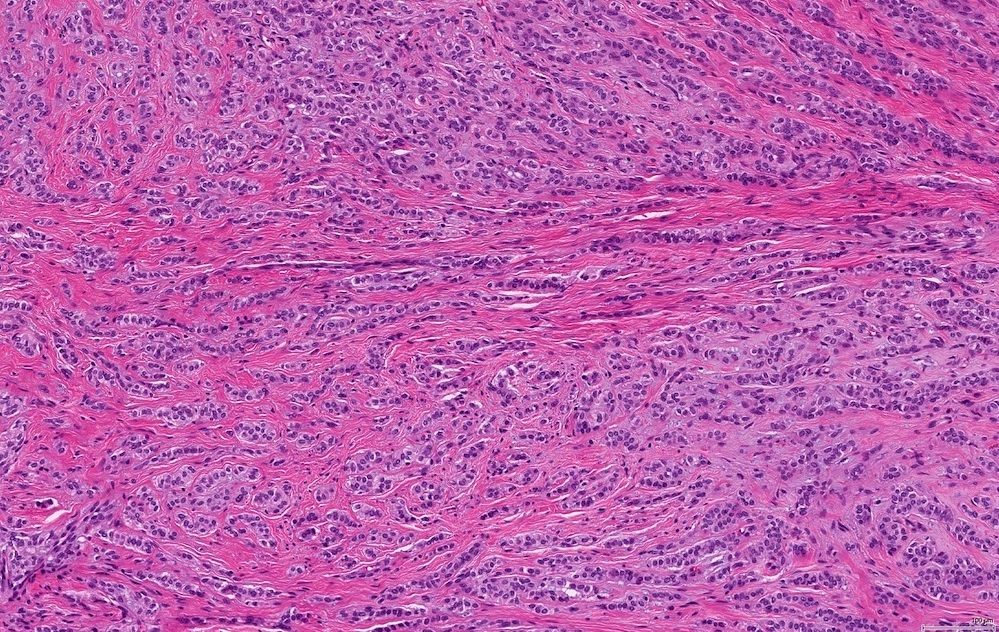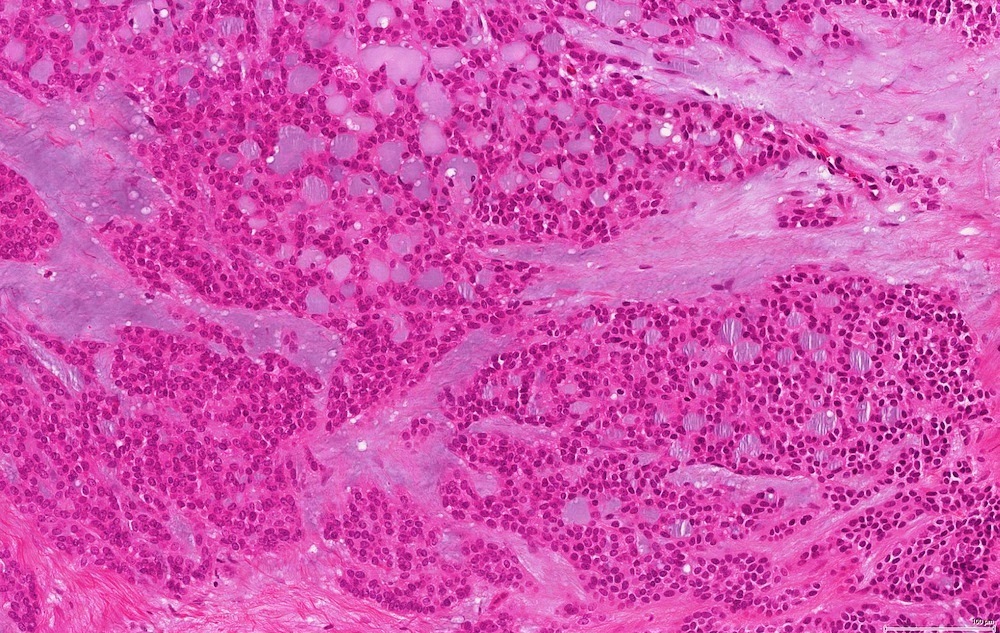Table of Contents
Definition / general | Essential features | Clinical features | Treatment | Microscopic (histologic) description | Microscopic (histologic) images | Positive stains | Negative stains | Differential diagnosis | Additional references | Board review style question #1 | Board review style answer #1Cite this page: Reisenbichler ES Polymorphous. PathologyOutlines.com website. https://www.pathologyoutlines.com/topic/breastmalignantpolymorphous.html. Accessed April 18th, 2024.
Definition / general
- Primary breast tumor with morphology similar to that of polymorphous low grade adenocarcinoma of the salivary glands
- "Low grade" terminology not used in these tumors due to reported case with widespread metastases
Essential features
- Very rare tumor; only 3 reported cases, first described in 2006 (Virchows Arch 2006;448:29)
- Similar to tumors of the salivary glands; they are composed of monotonous cells arranged in nests and cords
- Difficult to know prognosis of such a rare tumor but shows slow, aggressive growth with metastatic potential
Clinical features
- The rare reported cases all presented as:
- Palpable masses
- 1.5 - 4 cm in greatest dimension (mean 3 cm) with infiltrative borders
- Patient mean age 55 (range 37 - 74)
- No axillary metastases reported but one patient developed distant metastases within 3 years
Treatment
- All reported cases were treated with surgical resection (plus radiotherapy if breast conserving surgery) and axillary dissection
Microscopic (histologic) description
- Monotonous proliferation of neoplastic cells arranged in varying architectural patterns including tubules, trabeculae, alveolar, cribriform and solid nests
- Nuclei are round to ovoid with vesicular chromatin, moderate mitotic activity without necrosis
- Central and peripheral areas of the tumor may demonstrate differing architectural and immunohistochemical features
Microscopic (histologic) images
Differential diagnosis
- Adenoid cystic carcinoma: both have cribriform and alveolar growth with possible basal lamina-like material and are triple negative (ER / PR / HER2)
- Adenoid cystic carcinoma has two cell types with a population of actin positive cells that are absent in polymorphous adenocarcinoma
- Invasive lobular carcinoma: both can have single file pattern of growth but polymorphous adenocarcinoma has membranous E-cadherin and is negative for ER / PR and AR
- Salivary tumor metastatic to the breast: clinical history of a salivary neoplasm
Additional references
Board review style question #1
- What receptor profile is expected in a primary polymorphous adenocarcinoma of the breast?
- ER+, PR+, HER2- (Luminal A)
- ER-, PR-, HER2- (Basal-like)
- ER-, PR-, HER2+ (HER2 positive)
- ER+, PR+, HER2+
Board review style answer #1
B. Like many of the salivary gland-like tumors of the breast, polymorphous adenocarcinoma is a triple negative, basal-like tumor. Unlike the poor prognosis seen in many triple negative breast tumors, salivary gland-like tumors, including polymorphous adenocarcinoma, may have a more favorable prognosis. (Appl Immunohistochem Mol Morphol 2013;21:283)
Comment Here
Reference: Polymorphous carcinoma
Comment Here
Reference: Polymorphous carcinoma




